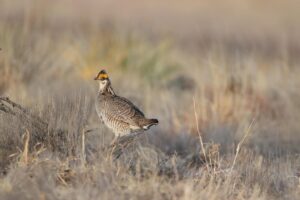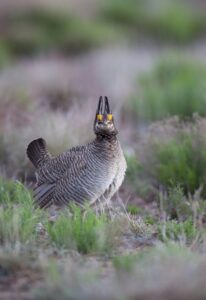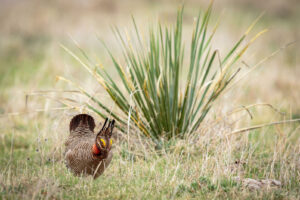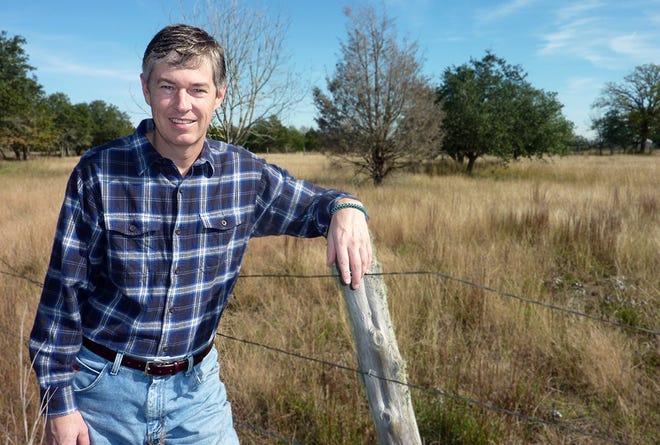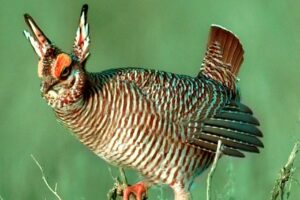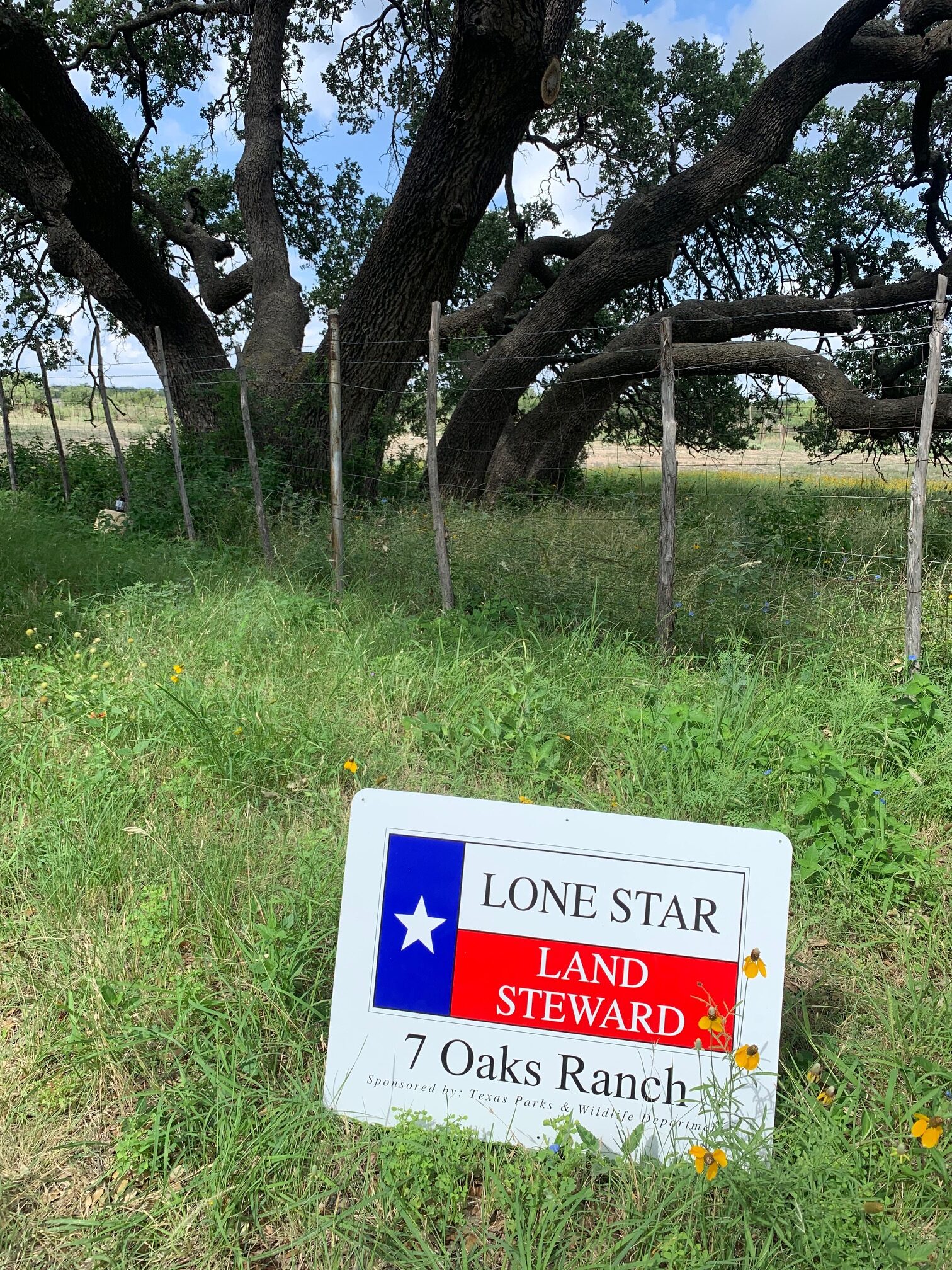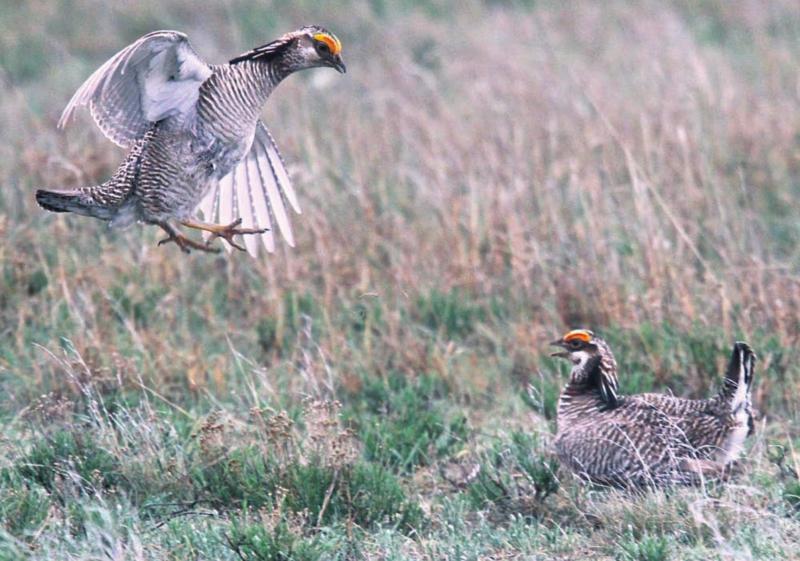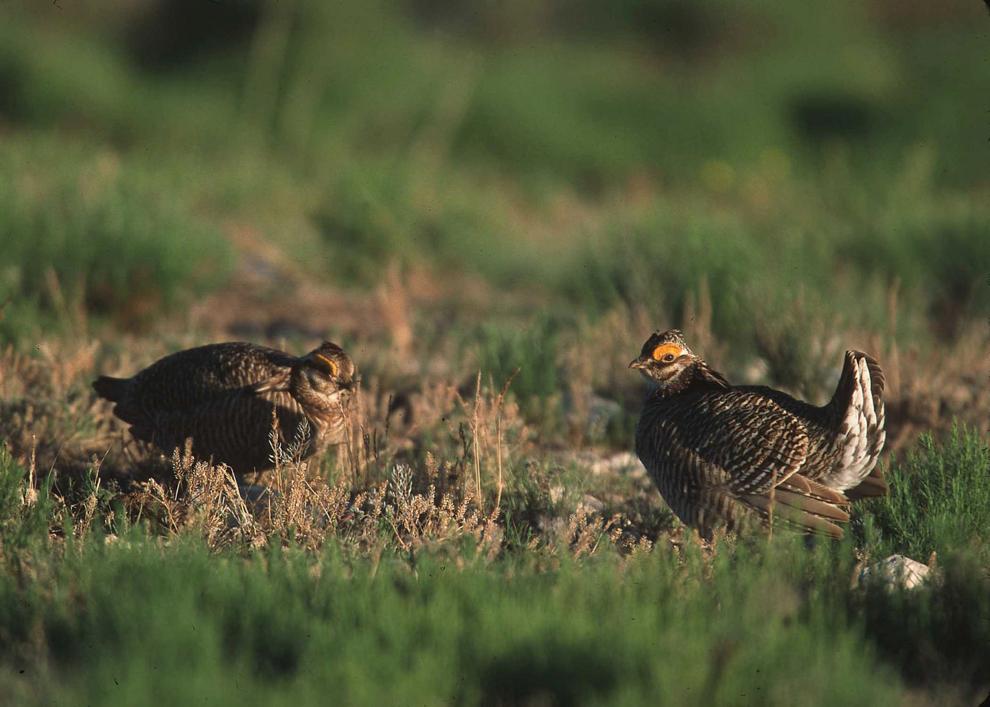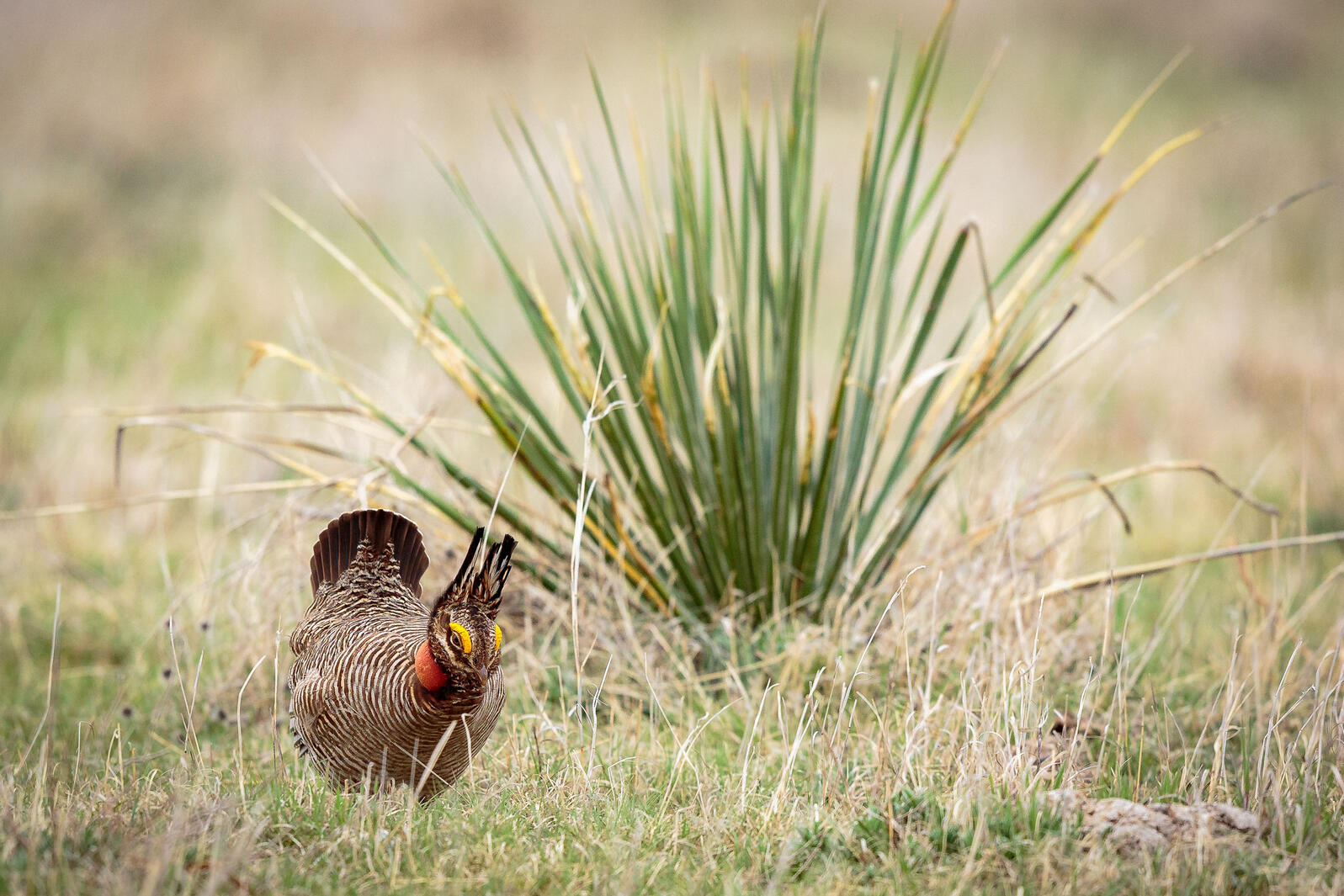May 26th, 2021
After a thorough review of the best available science, the U.S. Fish and Wildlife Service is proposing to list two distinct population segments (DPS) of the lesser prairie-chicken under the Endangered Species Act (ESA). The Service is requesting comments or information from the public, governmental agencies, the scientific community, industry, or any other interested parties concerning this proposed rule. The lesser prairie-chicken currently occupies a five-state range that includes Texas, New Mexico, Oklahoma, Kansas and Colorado and faces a number of threats, including, modification, degradation and fragmentation of its habitat.
The Service’s scientific review of past, present and future threats to the lesser prairie-chicken and ongoing conservation efforts found the Southern DPS is in danger of extinction, and the Northern DPS is likely to become endangered in the foreseeable future. Accordingly, the Service proposes to list the Southern DPS as endangered under the ESA and the Northern DPS as threatened with a 4(d) rule that tailors protections.
“The loss of America’s native grasslands and prairies of the southern Great Plains has resulted in steep declines for the lesser prairie-chicken and other grassland birds,” said Service Regional Director Amy Lueders. “For more than two decades, the Service has supported and encouraged our partners’ voluntary efforts to conserve the lesser prairie-chicken. Together, we have made great strides in conserving key habitat and raising awareness about threats to the lesser prairie-chicken, but we still have much work to do to ensure we have viable lesser prairie-chicken populations. The Service will continue to closely partner with diverse stakeholders across the lesser prairie-chicken’s range to restore this iconic species.”
The Southern DPS encompasses lesser prairie-chicken populations in eastern New Mexico and across the southwest Texas Panhandle. Habitat in this DPS is comprised largely of shinnery oak prairie. The Northern DPS encompasses lesser prairie-chicken populations in southeastern Colorado, southcentral to southwestern Kansas, western Oklahoma and the northeast Texas Panhandle. This DPS includes the lesser prairie-chicken’s short-grass, mixed-grass and sand sagebrush ecoregions.
The Service is proposing a rule under the ESA’s Section 4(d) for the Northern DPS that would tailor protections for the bird. The 4(d) rule proposed for the Northern DPS would except any “take” of the bird associated with the continuation of routine agricultural practices or the implementation of prescribed fire. The ESA defines take as, “to harass, harm, pursue, hunt, shoot, wound, kill, trap, capture, or collect or attempt to engage in any such conduct.”
The lesser prairie-chicken is a species of prairie grouse commonly recognized for its colorful spring mating display and stout build. Once numbering in the hundreds of thousands, its population has declined, due largely to habitat loss and fragmentation, across the southern Great Plains. Aerial survey results from 2012 through 2020 estimate a five-year average lesser prairie-chicken population of 27,384 across the five-state region. It is estimated that lesser prairie-chicken habitat has diminished across its historical range by about 90 percent.
The Service continues to work with partners and private landowners to develop voluntary conservation agreements that will protect the lesser prairie-chicken and the native grasslands on which it depends, while assuring that ranching, agriculture and other activities can continue regardless of whether the species is listed. To date, millions of acres of land have been enrolled in voluntary conservation measures across the lesser prairie-chicken’s range.
The Service’s peer-reviewed species status assessment provides a biological risk assessment on the threats and conservation efforts effecting the lesser prairie-chicken and evaluates its current condition. It also examines its biological status under varying plausible future conditions, incorporating the implications of future threats and conservation actions. According to the assessment, habitat loss and fragmentation are expected to continue, even when accounting for ongoing and future conservation efforts, which will result in continued declines across the species’ range.
The Service has determined that the designation of critical habitat for the lesser prairie-chicken is prudent, but not determinable at this time. We will work with states and other partners to acquire the complex information needed to make a critical habitat determination.
The lesser prairie-chicken became a candidate for listing under the ESA in 1998 and was listed as a threatened species in 2014. The listing was vacated in 2015 following a lawsuit. In September 2016, the Service received a new petition to list the lesser prairie-chicken as endangered, and in November 2016 made a substantial 90-day petition finding that listing may be warranted.
The Service submitted the draft rule to the Federal Register today. The Service is requesting comments or information from the public, government agencies, the scientific community, industry, or any other interested parties concerning this proposed rule once it publishes in the Federal Register. Comments must be received within 60 days of its publication in the Federal Register. Information on how to submit comments will be available at www.regulations.gov by searching under docket number FWS–R2–ES–2021–0015. Information on how to request a hearing is also included in the Federal Register notice.
The Service will hold two public hearings to gather public comments on the listing proposal. We will hold a public informational session on July 8, 2021 from 5:00 p.m. to 6:00 p.m. Central Time, followed by a public hearing from 6:30 p.m. to 8:30 p.m. To register for this hearing, please visit: https://zoom.us/meeting/register/tJcvce6tqj0pE9R9F2LsoQFVjNRv8kooxeKJ. On July 14, 2021 we will hold a second public informational session from 5:00 p.m. to 6:00 p.m. Central Time, followed by a public hearing from 6:30 p.m. to 8:30 p.m. To register for this hearing, please visit: https://zoom.us/meeting/register/tJwrfu-hqzoiG9I2Yr2hqxLpPxSu9YrLZzu5.
For more information, please visit https://www.fws.gov/southwest/es/LPC.html.

